Report reprints from The Hindu an article about the places to see in Baku, Azerbaijan.
The prince of the Caspian
There are many things that you check when you travel, but no one thinks of checking the wind speed! Baku, the capital of Azerbaijan that lies on the banks of the Caspian Sea, is also called the City of Winds. And it rarely lets up — thanks to Khazri, a cold wind from the North (at 140 kilometers per hour), and Gilavar, a milder one from the South.
We are welcomed by the former. So our excursions around the city are punctuated by Marilyn Monroe moments (skirts a-flying). Once you get used to the blustery weather, the city’s charm takes over. An eastern country with a western outlook, its architecture is varied — from the medieval to Russian (the former Soviet nation gained its independence in 1991) and the contemporary. Two days give us just enough time to catch the highlights.
Yanar Dag
The Burning Mountain is 27 kilometers from Baku. As we drive away from the city, Azerbaijan’s oil associations come to the fore. Drilling rigs pop up, the sole sentinels in large fields stripped bare of vegetation. Little shacks selling cranberries and peaches brighten up the drab landscape. However, as we get closer to YanarDağ, things liven up. Literally. We smell the smoke before we see the flame, a wall of it licking up the sides of a small hillock. Natural gases coming up through vents in the sandstone feed the fire, as it has done for centuries. Selfies are mandatory, but caution is advised.
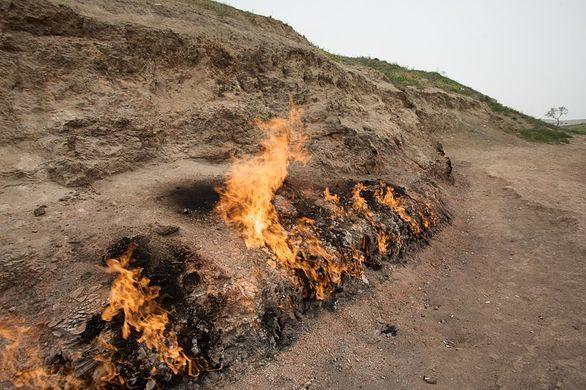
Ateşgah
Keeping to our fiery trial, we drop by the 500-year-old Fire Temple, a testament to Azerbaijan’s associations with the Silk Route. That history can be seen in the Sanskrit and Gurmukhi script we spot on lintels and walls. According to our guide, Hindus, Zoroastrians, and Sikhs traveled here and donated money to build the temple. Despite the wind, the fire in the central altar roars up to the ceiling, warming the beige of the surrounding sandstone walls. Today, it is fed by Baku’s gas pipeline, but for centuries, a now-exhausted natural gas field had ignited the ‘eternal flames.’
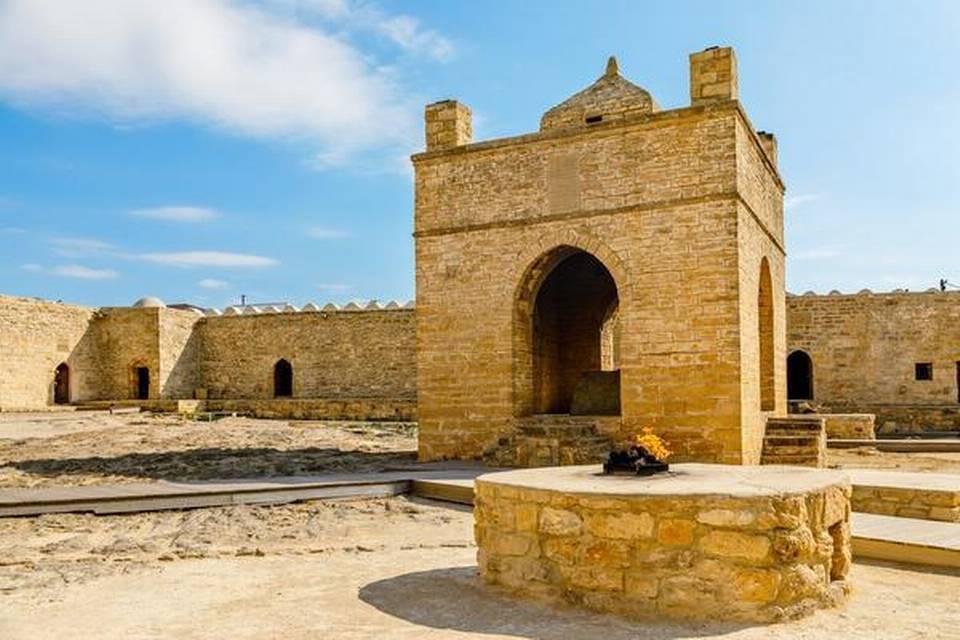
Icherisheher
It is the colors we notice, as we enter the gates of the Old City — the green of pomegranate trees, the sun-warmed yellow of sandstone walls, and the riot of silks in roadside stalls. A UNESCO World Heritage Site, it is the most ancient part of Baku. Behind crenelated walls, cobblestone paths wind past old buildings, partially-excavated ruins, and sheltered cafés. Hamams sit cheek-by-jowl with art museums; the minarets of the 11th-Century Muhammad Mosque pierce the sky. We can’t make it to the 15th-Century Palace of the Shirvanshahs, but the Maiden Tower (where legends say, a flame-haired girl defended the city from an enemy who had laid siege) more than makes up, with a museum tracing the history of the city’s evolution.
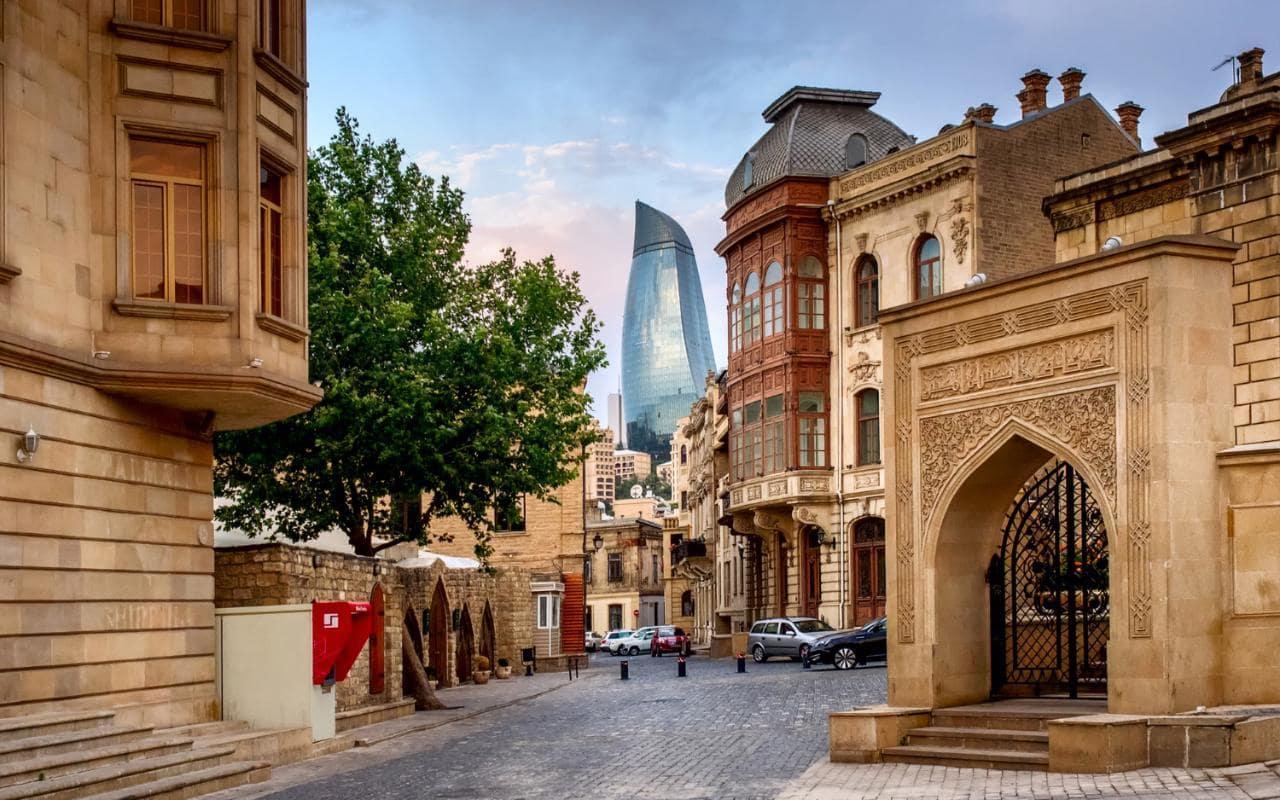
Highland Park
Baku at night is spectacular. Spotlights illuminate old buildings and storefronts dazzle. We, however, climb to the top of the viewing square, built on the highest point in the city, to get the best view. The boulevard fronting the Caspian Sea is trimmed in jewel-like lights, while Soviet-era statues and gardens, and the show at the Flame Towers — a trio of skyscrapers that are lit up every night — add to the drama.
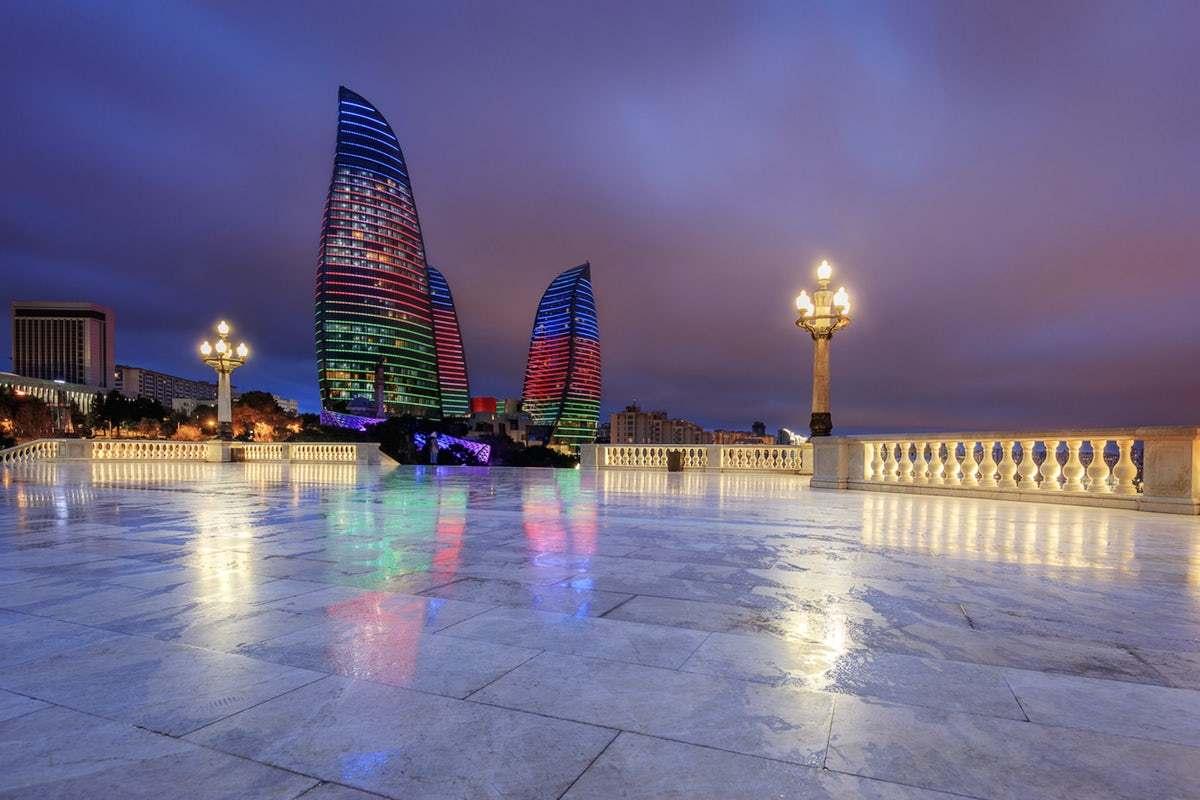
Gobustan’s mud volcanoes
Battered Soviet-era cars hurtling down dirt roads may not seem an ideal start to the morning, but it is exhilarating. The barren, almost otherworldly, landscape, heavy with the smell of sulfur, needs this injection of life. Fifteen minutes in, we spot innocuous-looking mounds. Inside, thick, cement-like ooze bubbles quietly, except for an occasional pop. Then cheers split the air, as a dark-haired Russian tourist takes off his shirt and slides in. None of us are in a hurry to try our luck floating, so our chatty driver scoops out some mud instead and tells us to apply it on our faces. It’s supposed to be great for the skin and people with arthritis. Well, maybe another time.
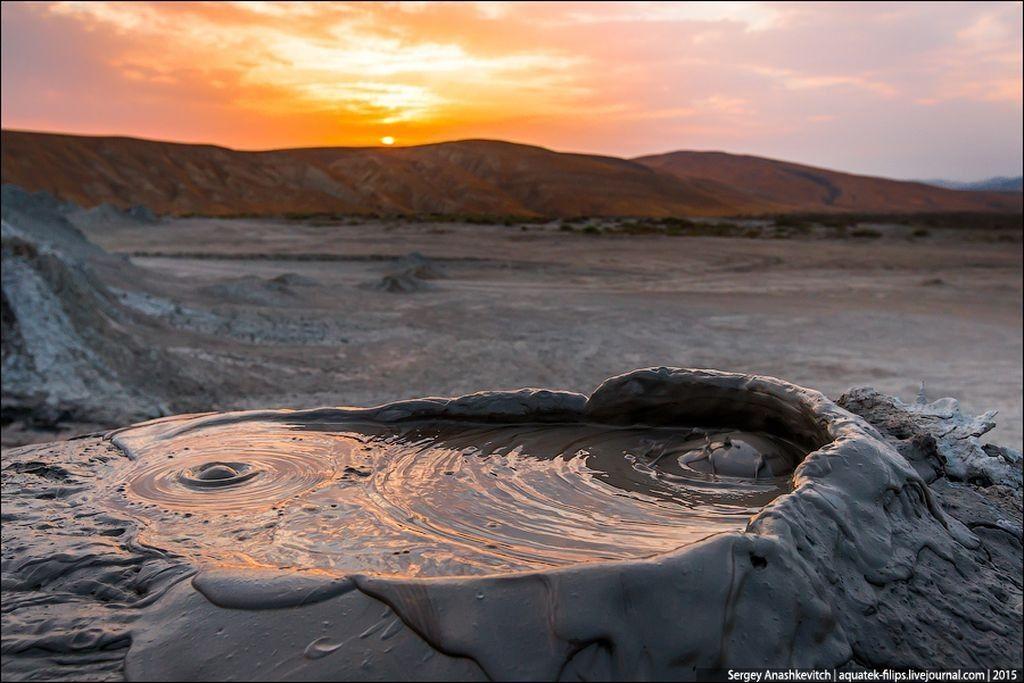
Carpet Museum
This is a must-visit. Designed by Austrian architect Franz Janz to look like a rolled-up carpet, it is an exhibition space and a research center — housing carpets from the 17th to the 20th centuries. There are woven rugs on walls, on looms, on curved and tilted displays even laid out floor-to-ceiling in a room outfitted to look like an old Azeri household. Motifs range from flora and fauna to geometric patterns, but it’s the ones created during the Soviet rule that is a surprise. Each tells a story — be it of revelry, the developing oil industry, or the need to exercise (a painterly depiction of three youngsters running on the beach)! One of their biggest carpets, made with 37 million knots, features Lenin, we are told.
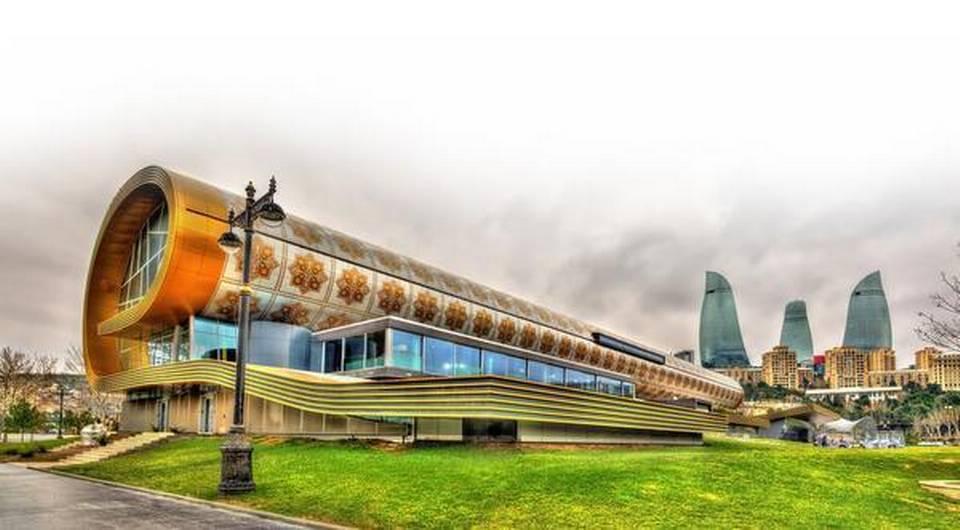
Centre
We end the day at one of the newest monuments. Designed by the late Iraqi-British architect, Zaha Hadid, the center is like an undulating Arctic wave. For those like us, who do not know much about the country’s past, the Heydar Aliyev exhibit throws light on the first president — through the interactive touchscreen and AV presentations. Elsewhere, exhibits, performances, and talks bring in the best from around the world. At the moment, Zoospective & Morphospective, by the French sculptor Mauro Corda, is attracting crowds. A few hours are not enough to cover its eight floors. Finally, sore feet ready for a cushioned pouf, we wrap things up with a photo op at the ‘I love Baku’ installation outside.
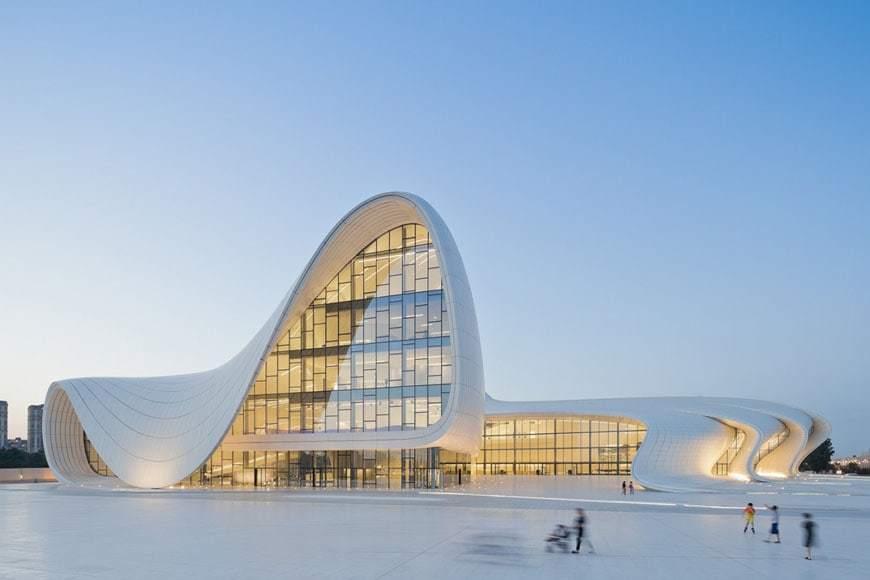


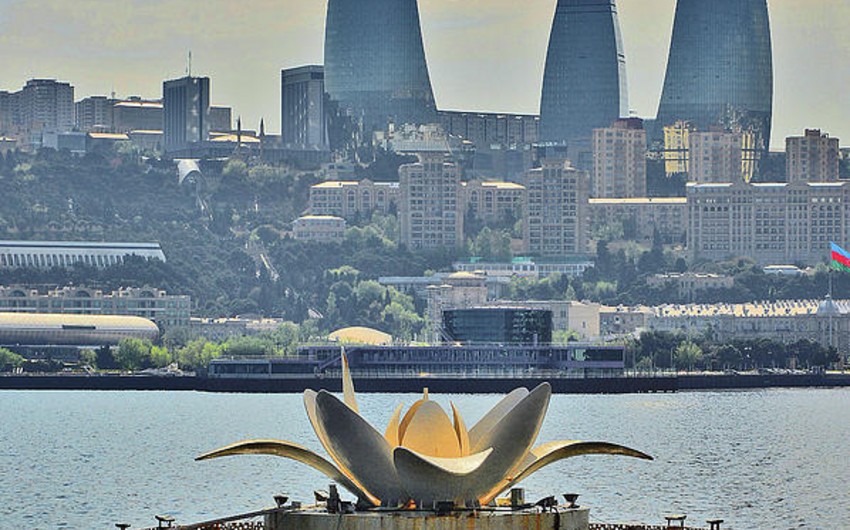 https://static.report.az/photo/7596aed9-5a2d-4063-85cd-6c599538a54c.jpg
https://static.report.az/photo/7596aed9-5a2d-4063-85cd-6c599538a54c.jpg

